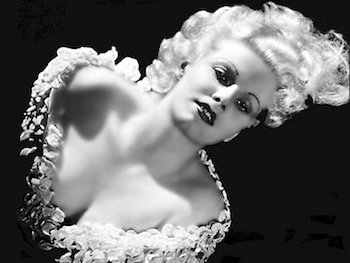Product Description
Piaget “Day and Night” flower bracelet with articulated petals and en tremblent stamens, 18K yellow gold and set with diamonds (approx. 4 carats), signed, c. 1950’s



Piaget “Day and Night” flower bracelet with articulated petals and en tremblent stamens, 18K yellow gold and set with diamonds (approx. 4 carats), signed, c. 1950’s
BOŘEK ŠĺPEK (1949-2016) Prague, Czech Republic
Goblet “BIBI I” 1996
Blown clear glass with red looping details
Exhibited: The Twenty One (Millenium) Exhibition, Arzenal Gallery, Prague, 2000
For more information see: Sípek, Philippe Louguet, Dagmar Sedlická (Paris: Éditions Dis Voir, 1999); Borek Sipek and Christian Tortu: Collection Twentyone 2001 (Prague: Arzenal Edition, 2001)
H: 13″ x Dia: 4″
Price: $1,050
The Czech architect, furniture designer, and glass artist Borek Sípek was born in Prague in 1949. From 1964 to 1968 Borek Sípek studied furniture design at the Prague School for the Applied Arts. In 1969 he began to study architecture at the Hochschule für bildende Künste in Hamburg. In 1973 he studied philosophy at Stuttgart University. From 1977 until 1979 he was an academic assistant at the Hannover University Institute of Industrial Design. Borek Sípek took his degree in architecture at Delft Technical University. Then he taught design theory at Essen University until 1983. In 1983 Borek Sípek also opened an architecture and design practice in Amsterdam. He founded Alterego, a design business, with David Palterer. In the 1980s, Borek Sípek designed Postmodern furniture and glass objects, which brought him international renown. Borek Sípek’s designs are formally distinctive, both ingeniously conceived and sumptuous, and are often executed in unconventional materials and combinations of materials. Borek Sípek views design as an interpretation of culture. For this reason, he rejects the functional and rational approach to design and does not want striving for technical perfection to lead to disregard of individuality. In 1983 Borek Sípek designed “Bambi”, a fragile-looking tubular steel chair with brass fittings and a back covered in silk. In 1991 Borek Sípek designed the “PCSS” table with blue glass legs and metal fittings. Borek Sípek’s superlative glass objects are executed by glassblowers in Murano and Novy Bor. Borek Sipek is also known worldwide as an architect and has received prestigious commissions. Between 1993-2002 Borek Sípek worked on the Het Kruithuis Museum in ‘s Hertogenbosch (the Netherlands). In 1994 Borek Sípek designed the Kyoto Opera Houseentsteht das Opernhaus in Kyoto. In 1995 Borek Sípek designed a Paris boutique for Karl Lagerfeld. In 1990 Borek Sípek became a professor of architecture at the Academy for the Applied Arts in Prague, where he taught until 1998. Since 1999 he has taught at the Universität for angewandte Kunst in Vienna.
His works are included in major international museum and private collections throughout the US and Europe including Museum of Modern Art, Stedelijjk Museum, Denver Art Museum, The Corning Museum of Art, The Hauge Municipal Museum, Kunstmuseum in Düsseldorf and Design Museum in London.
EDWARD WELBY PUGIN (1834 – 1875) UK
“Granville” chair c. 1870
Walnut, klismos-style A-frame back with exposed pegs, shaped seat and base with exposed mortise and tenon joinery.
Illustrated: Victorian and Edwardian Decor: From the Gothic Revival to Art Nouveau, Jeremy Cooper (New York: Abbeville Press, 1987) fig. 117; Nineteenth Century Design: from Pugin to Mackintosh, Charlotte Gere and Michael Whiteway (New York: Harry N. Abrams, Inc., 1993) p.143, pl. 173 (in oak); Catalogue Sommaire Illustré des Art Décoratifs, Musée d’Orsay (Paris: Éditions de la Réunion des Musées Nationaux, 1988), p. 184; Truth, Beauty and Design. Victorian, Edwardian and later decorative art, exhibit. cat. (Fisher Fine Art Limited, London, 1986.) p. 32, No. 50
A “Granville” chair is in both the Permanent Collection of the Metropolitan Museum of Art and the Museum of Modern Art in New York and the Musée D’Orsay, Paris.
H: 33″ x D: 18 1/2″ x W: 18″
Edward Welby Pugin, son of gothic-revivalist A.W.N. Pugin, was thrust into professional and family responsibilities upon his father’s death in 1852 when the young Pugin was only eighteen years of age. His style closely resembled his father’s although his furniture for the Granville Hotel in Ramsgate (1873) had its own robust individuality. Like his father, he designed both church and domestic furnishings, mostly executed by Hardman & Co. of Birmingham, the firm established by his father’s collaborator John Hardman. During his lifetime E.W. Pugin was regarded as the leading Catholic church architect of the High Victorian period, in fact he left for New York in 1873 and set up an office on Fifth Avenue and received commissions for some 30 churches across the U.S., including Chicago and Washington, D.C.
